Available for preorder from today!
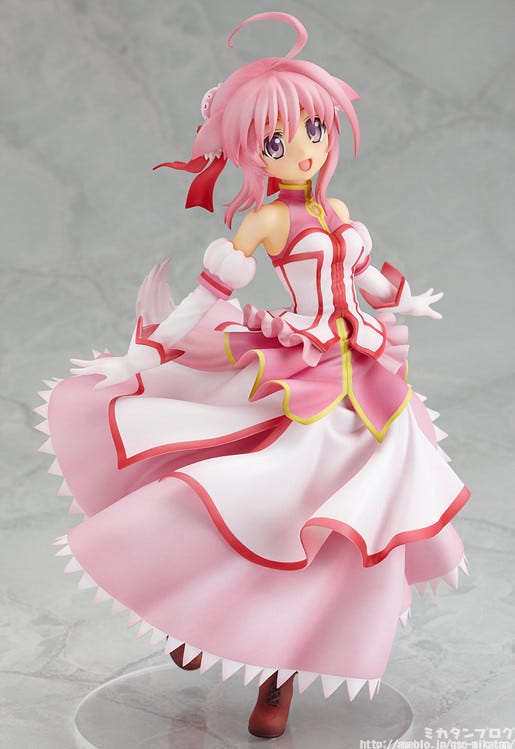
From DOG DAYS:
Millhiore F. Biscotti!
As I mentioned in the last post, today we’ll be looking at how the 3DCG data for the figure was made!
We’ll be taking a look from the very start of things! I’ll also be going into a bit of detail, so I think it’ll make for quite an interesting read!
Of course the one who told me all about it was Oda-P, who was in charge of Millhi’s sculpting!
/ ー ー \ ← Oda-P
| (●) (●) |
| (__人__)| ”I’m not sure how well I can explain,
| `i i´ | but I’ll try my best!”
| . `⌒ }
ヽ }
ヽ ノ
/ ヽ
Alright, let’s get into it!!
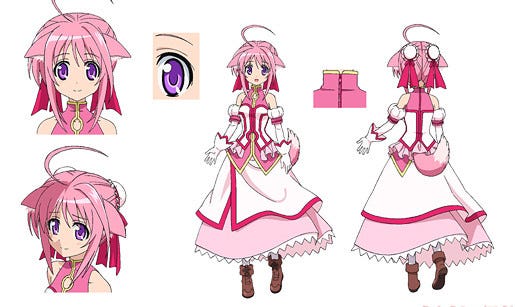
| (1) Deciding on a Character (Planner) Today’s model is of course DOG DAYS’ Millhiore F. Biscotti. Nowadays you’ll hardly ever find an anime series, movie or game that doesn’t make use of 3DCG, but the data used for those is specially created to focus on movement. On the other hand, the 3DCG data for figures just needs be sculpted from clay into a fixed, non-moving model . That’s the main difference between common 3DCG and the 3DCG used for figure sculpting. Someone who can work with standard CG, knows the physique and build of the human body and also understands just what makes things ‘moe’ could easily work with a figure making team. We’ll go through the whole process that the director of the project goes through to reach the final product. |
Ooh! As expected of Princess Millhi! That face at the bottom left is adorable!
So… we’ll use this illustration to make some 3DCG data?
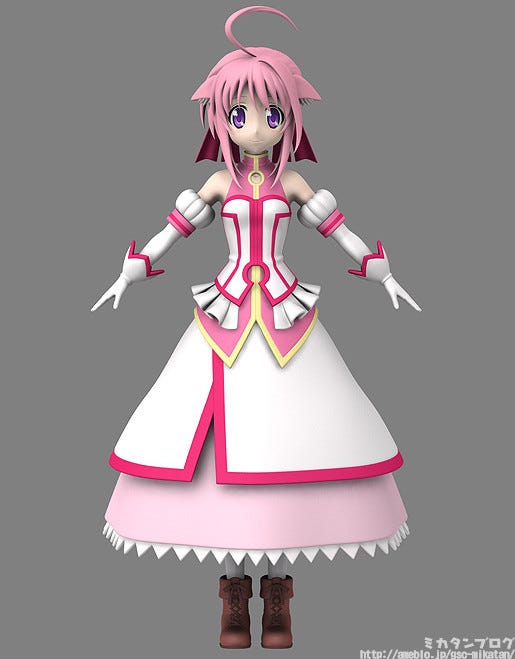
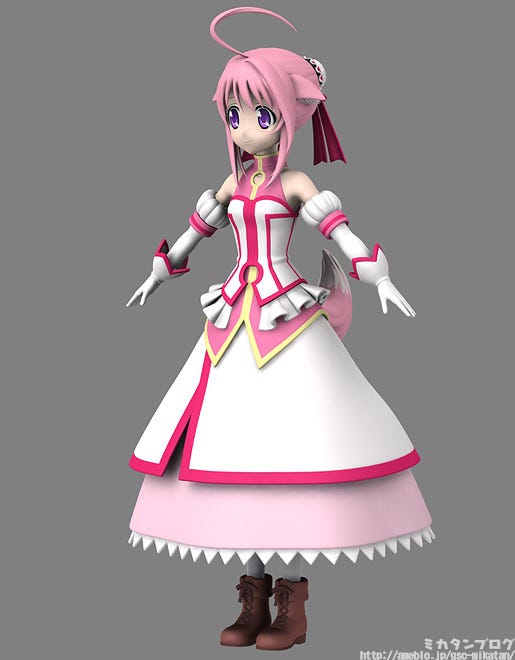
| (3) Modeling (3DCG Developer) At first, the figure’s pose is not set in stone, so many ‘bones’ and joints are placed into the data based off the original illustrations of the characters, so that the pose can be easily changed at a later stage. This 3DCG is made to be movable! |
/::::::─三三─\
/:::::::: ( ○)三(○)\ “Priness!!
|:::::::::::(__人__)::| You look kind of like a scarecrow…
\::::::: |r┬-| / and yet you’re still so gorgeous!”
ノ:::::::: `ー’´ \
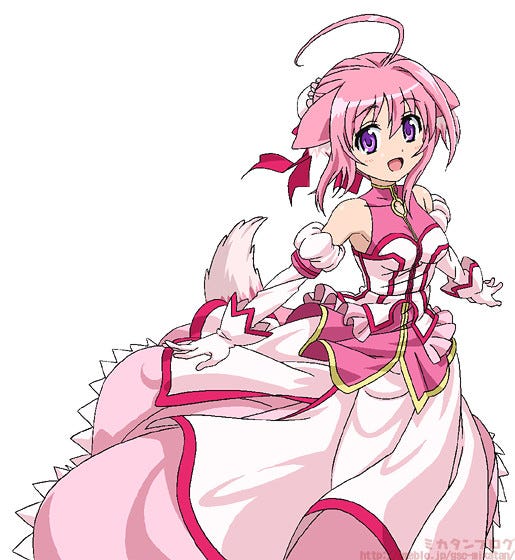
| (3) Deciding on a Pose (Planner) This time around, the pose was based on a scene from the ending! Now we move back onto the modeling, using the pose we decided on. |
Yes! A wonderful pose that really brings out the cute side of the Princess!!
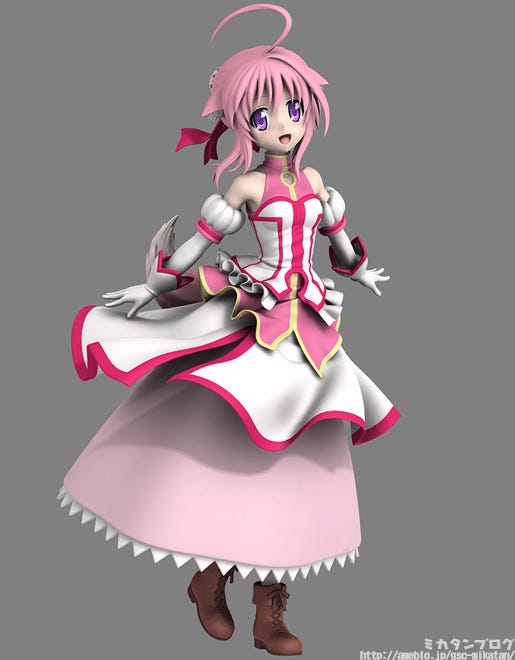
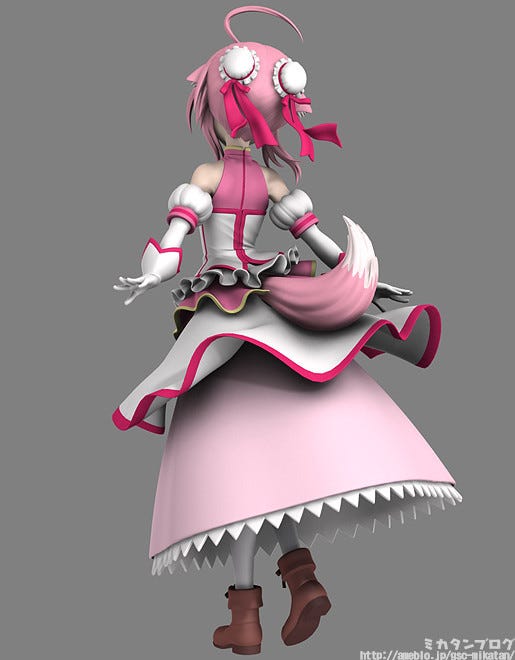
| (4) 3DCG Sculpting Stage #1 (3DCG Developer) The original illustration didn’t feature the lower half of her body, so that part is simply done without a basis illustration. Eventually a first run of the 3DCG data is created, which will look something like the above. |
Ah! She moved into her pose!
Although she still seems a little stiff…?
/ ̄ ̄\
/ ー ー \ ← Oda-P
| (●) (●) |
| (__人__)| ”From here on, the project director gives some
| `i i´ | changes that need to be done. I have an example here.”
| . `⌒ }
ヽ }
ヽ ノ
/ ヽ
Ooh! Lemme see!!
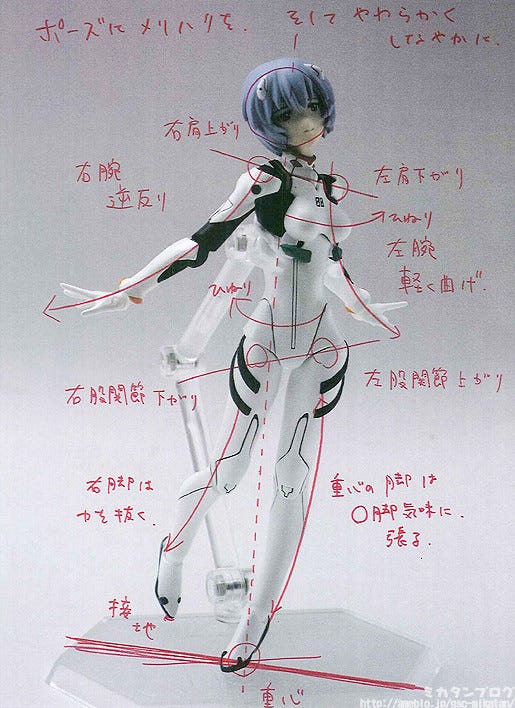
| (5) Adjustments to the Pose in #4 (Director) The most common changes are adding in extra bends and twists. It needs to be a smooth pose, but also one that brings out a dynamic feeling. First the most obvious changes from the original illustration are brought up. In this case it was the way the hips were twisting – but changing that means changing all sorts of other things as well. |
Checking poses using a figma!! ((((゚Д゚)))
I-I must admit, it does make it much easier to see the problems now!! (By the way, yhis Ayanami-san is Oda-P’s own personal figure.)
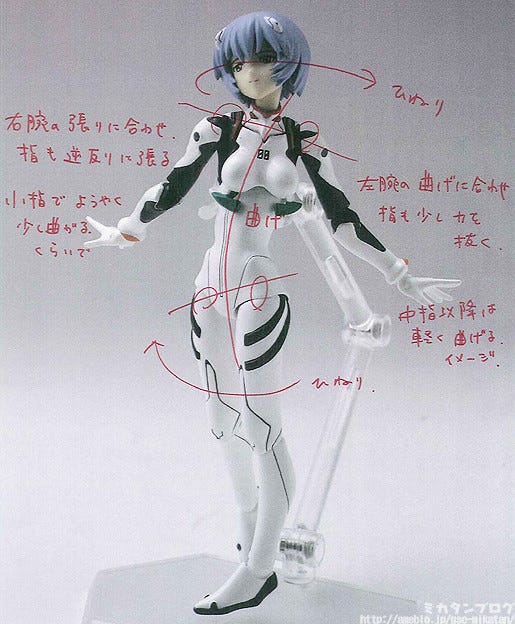
| The pose features the right shoulder in front of the left, which means the right leg needs to further forward than the left one. → Which means, the left leg will have the most weight on it, so the left side of the pelvis should be placed higher than the right side. → Which means, the left shoulder should be lowered and the right shoulder should be higher so that the stomach area is bent horizontally. → This allows for the left and right sides to balance out with bends in the right place, creating a smooth, dynamic feeling. |
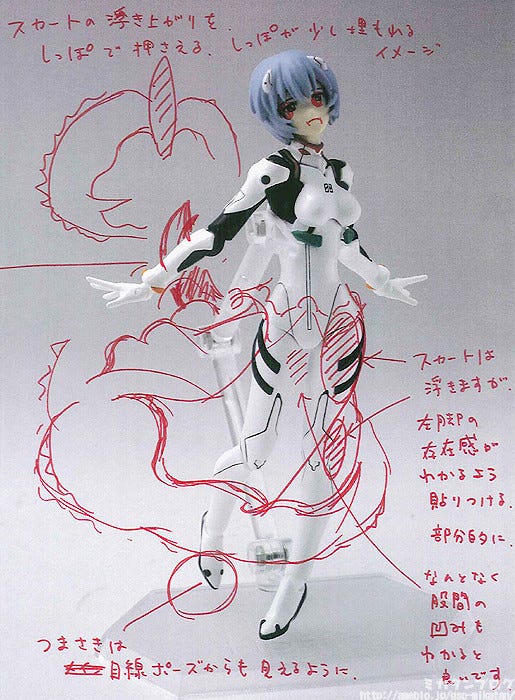
| The overall feel of the figure is also taken a look at here, and sometimes has some changes made on a larger basis too.
Getting all the changes right is the toughest part for the figure director. Here are the actual instructions that came with these images ↓ The twisting of the hips is definitely one of the most noticeable points of the illustration, and we’ve got a feeling for how the legs should look because of that now. |
W-Wow…!!
It certainly shows that you need some feeling as to how the human body moves when doing this direction!
| (6) Sculpting Adjustments (Director) While the previous changes were more looking at physical errors, these are changes that need to be done as they differ from the original work. |
So even areas like the inside of her skirt are all carefully directed to match up how they should – there really is no room to miss anything while doing this!
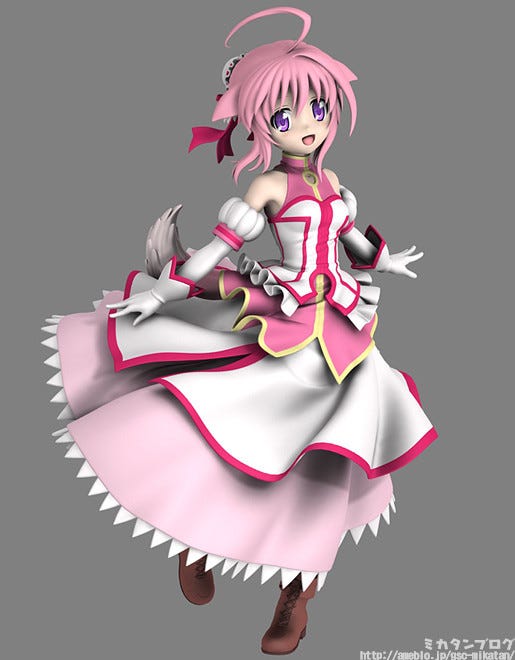
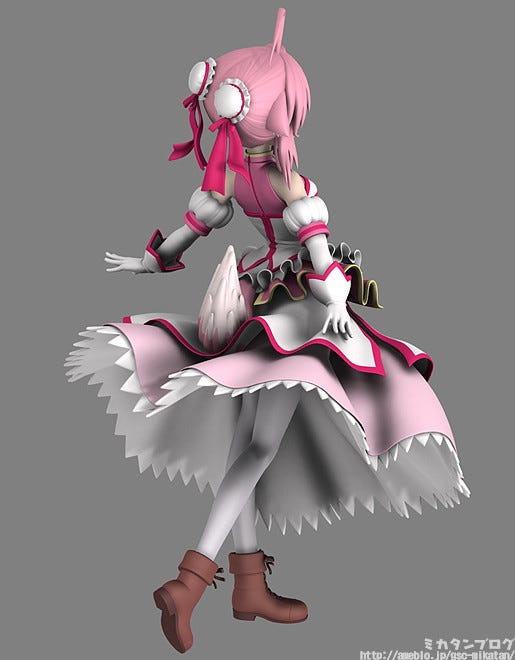
| (7) 3DCG Sculpting Stage #2 (3DCG Developer) After this point, you’ll start feeling the dynamic feeling that we are aiming for. The pose really starts pulling together, and the 3D data is checked on once again. The whole model is spun around, so that it can be seen from any possible angle – to make sure there is nothing strange happening at certain angles. |
The skirt is definitely a noticeable change – it’s much bigger now and looks a lot closer to the final figure I showed on the blog on Wednesday! You can also see the changes in the way the hips are turning now!
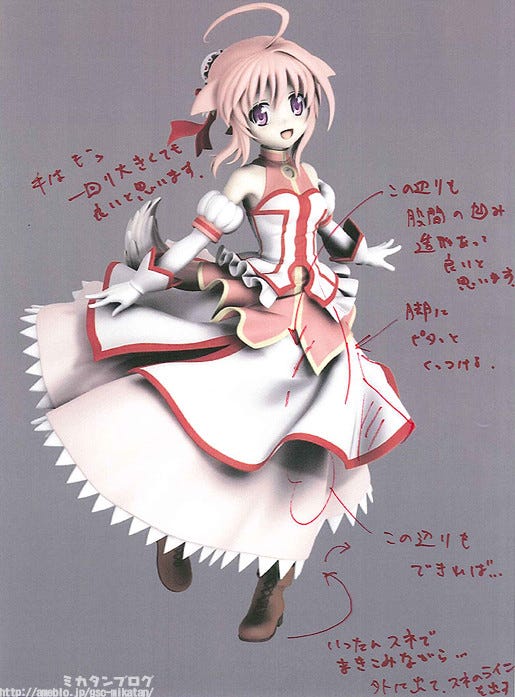
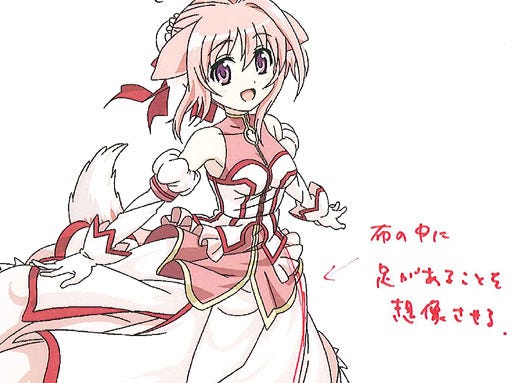
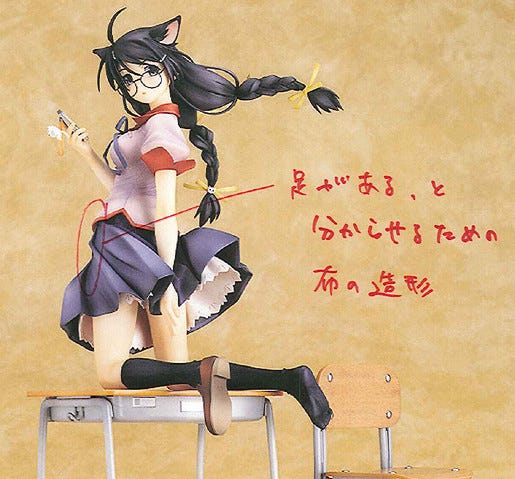
| (8) Sculpting Adjustments (Director) This is the final note of any more adjustments that need to be made. The biggest problem at this point was where exactly the legs should be inside of the skirt. Most of the instructions were to try and make it noticeable that the legs really are beneath the skirt. |
We’re really moving into the finer details now! This is where the smallest of changes can really turn a good figure into a great one!

| (9) Printing Out the Face Obviously the whole figure will be printed out eventually, but the most important part to check for early problems is the face. Often after this print-out, small changes such as the bevel of the cheeks are changed – they are very small changes, but they all come together in the end. |
It goes without saying that we all want a perfect figure, but of course the face is always the first thing you notice on a figure!!
The photo makes the face look quite big, but the changes that are done really are incredibly tiny – this goes for the prototype of course, but also for every single one of the figures made in mass production to get to you!
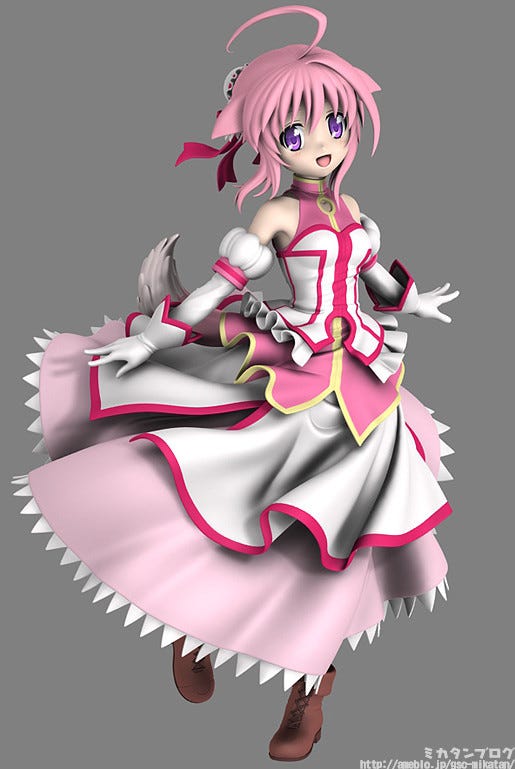
| (10) 3DCG Sculpting Stage #3 (3DCG Developer) The 3DCG Data is complete! The creases in the skirt, and the line of the legs is now much more noticeable. |
/ ) ) )/ \ /\
{ ⊂) (≡) (≡)\ ”Oooh! Wonderful!
| / ///(__人__)/// \ That’s the Princess I know and love!”
! ! `Y⌒y’´ |
| l ゙ー ′ ,/
| ヽ ー‐ ィ
| / |
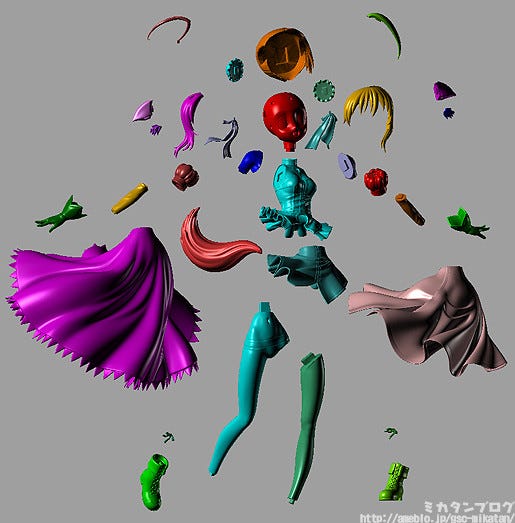
| (11) Parts Partitioning (3DCG Developer) Separating the different parts for production would be very difficult by hand, but with 3D data it’s a simple task! At least, that’s what you’d think… but actually, it can be rather troublesome. :P |
I’m sure a lot of you know, but the figures are all made up of various parts that are put together at a later stage! These separate parts are the ones that are made at the factories in China – and by using 3D data, it’s considerably faster to separate the different parts and save some much needed time!
Millhi ended up with 47 actual parts, 2 metal rods to be placed inside the figure and 2 parts for her base!

| – Summary –
You often hear people say that as more 3DCG sculptors come into the world, many actual hand working figure sculptors will fall away – and to a degree, I think that is correct. 3DCG is considerably faster to work with as you don’t need to worry about the putty drying, surface finishing or any other problems caused by hand-done work. This obviously means you can get a lot more work done in a specific amount of time. However, those who have been making hand sculpted figure for years have the experience and the theory behind the final products which can really help in the development of the 3DCG works. A lot of sculptors starting straight with 3DCG modeling will often have a hard time getting the representation of the body right at first. Based on that, I believe that the experienced figure sculptors should work with the 3DCG modelling specialists, in order to create figures that have the charms that come from both sides of the table, and I believe that will bring us into the new age of figure sculpting! – Oda |
So the 3DCG modelers and the the original sculptors can put their strengths together to create great figures and save time all at once!
I must say that the one thing that really stands out after hearing all this, is that…
The voice of the director is very important!
For example, I’m fairly certain that if I had been directing the changes after seeing the scarecrow Millhi instead of Oda-P… something rather different would have come out at the end… I think the ability to do that direction is one of those skills you obtain after doing hand sculpting for a very long amount of time. I’ve tried doing it myself before as well… and I can say that while it’s fun… it’s very hard, and quite intriguing!
Another thing I wanted to get through to everyone though this article:
In the end, a professional is always going to be needed!
Someone who can take the 3D print-out and clean it up, or even improve the way it looks with some hand-made adjustments. Another very important part that we didn’t really touch is that of the painting, which is a very strong point of the figure as well – all these things have to be done by hand!
There are also all sorts of parts to the making of this figure that I didn’t include in this – I was just focusing on the sculpting – but there is a lot of work put in by a lot of people for every single figure that is released. Next time I have the chance, perhaps I’ll take a look at some other points in the production process as well.
And finally, a little more advertising!
Millhiore F. Biscotti!
/ \
/ ─ ─\ ”Princess!!”
/ (●) (●) \
| (__人__) | ________
\ |r┬-| ,/ | | |
ノ `ー’´ \ | | |
/´ | | |
| l | | |
ヽ -一ー_~、⌒)^),-、 | |________|
ヽ ____,ノγ⌒ヽ)ニニ- ̄ | | |
She is up for preorder as of today!!
Be sure to check out our partner shops if you have any sales or preorder queries.
But that’s all for today!
I hope to see you all again next week!! (・∀・)ノ゛
(C)PROJECT DD

